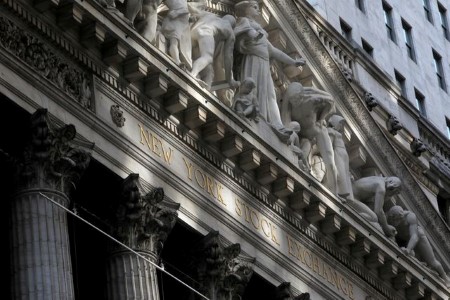




Quarterly Economic Growth Release: More BSP cuts to come
 DOWNLOAD
DOWNLOAD

Monthly Economic Update: Fed catches up
 DOWNLOAD
DOWNLOAD

Inflation Update: Steady and mellow
 DOWNLOAD
DOWNLOAD


Wall Street fear gauge in record retreat after last week’s massive spike

NEW YORK – Wall Street’s most-watched gauge of investor anxiety is continuing its speedy retreat from panic levels, suggesting that investors may be returning to strategies that bank on low stock volatility despite a near-meltdown in equities early this month.
The Cboe Volatility Index slipped to 16.31 on Wednesday, its lowest level since the beginning of the month. The index hit 65 on Aug. 5 and closed at a four-year high of 38.57 on that day as investors roiled markets by unwinding several massive positions such as the yen-funded carry trade.
If the index’s level holds into the close, the seven trading sessions it took the VIX to return to its long-term median of 17.6 will be the index’s quickest-ever drop from 35, a level associated with a high degree of fear. Similar reversions in the so-called fear gauge have, on average, taken 170 sessions to play out, according to a Reuters analysis.
Some options mavens believe the rapid retreat in the so-called fear gauge signals investors have returned to strategies that bank on markets remaining calm to deliver profits. Among those is the dispersion trade, in which investors seek to take advantage of the difference between index-level volatility and volatility in single stock options, analysts said.
“What we saw (on Aug. 5) was a unique confluence of events,” said Steve Sosnick, chief strategist at Interactive Brokers. “I think it’s also quite remarkable how quickly everyone reverted to the same playbook that has been working for them once it was established that those events appear to be temporary.”
The S&P 500 has risen 5% from its Aug. 5 closing level while the tech-heavy Nasdaq Composite is up 6% from that day’s close. Both indexes are up about 14% on the year.
The sharp retreat in the VIX also backs the idea that last week’s record jump was fueled by technical factors rather than longer-term angst over global growth, analysts said.
The VIX, which is calculated from S&P 500 options quotes in real-time, may have been driven up excessively due to lower liquidity in pre-market hours on Aug. 5, according to market participants.
The sudden break from months of stock market calm may have also jolted some investors who had piled into various options-based bets on continued market calm to rush to exit those positions, further amplifying the VIX surge.
“It was much more about market structure issues … it was about short volatility traders being forced to close out when things had gone up against them, and it really wasn’t about a real fundamental shock,” said Michael Purves, head of Tallbacken Capital Advisors.
“If we had a fundamentally driven VIX spike because something really bad was happening in the economy or world, then you wouldn’t see this type of plunge in the VIX from that high level,” Purves said.
(Reporting by Saqib Iqbal Ahmed; Editing by Ira Iosebashvili and David Gregorio)
This article originally appeared on reuters.com





 By Reuters
By Reuters